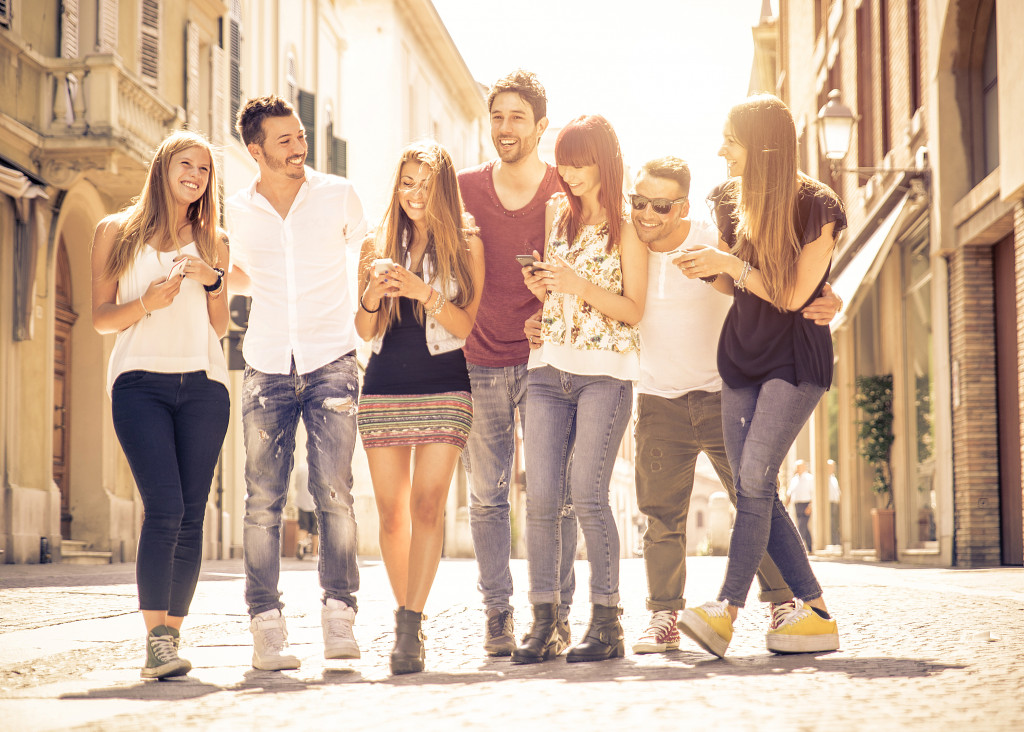The idea that diamonds are forever and that these are the best stones for an engagement ring is nothing but a successful marketing campaign.
De Beers, the biggest seller of diamonds in the world today, wanted to penetrate a bigger market for its precious product back in the 1930s. However, Americans at this time see the glistening stones as more of a luxury than a necessity. They’d rather buy appliances or cars.
N. W Ayer got smart and decided to touch on the most sensitive point of any consumer emotion. And nothing feels more emotionally charged than love and romance. In other words, the best way to profess undying devotion to another is through a diamond engagement ring.
From this, the tagline “Diamonds are forever” was born. Even in the midst of the Depression, men began buying the rocks, which now symbolize commitment and love.
But here’s the thing: if the same campaign would have happened today, it might not work as well. This is because marketing these days is no longer a one-way street. Companies do not have the sole monopoly on the message and even the branding anymore. Instead, it’s all about community engagement.
Why Community Engagement Matters in Branding
Back in the day, consumers often based their purchasing decisions on the information businesses fed them. These days, over 85 percent of US consumers would learn more about the products online before visiting the physical store.
According to Oberlo, more than half of consumers read reviews. Almost 60 percent, meanwhile, would read at least four reviews before purchasing a product or service.
Most of all, buyers are willing to share their experiences with others. In one of the industry surveys, businesses asked 70 percent of their customers to leave a review. Around half of them did.
They are doing these not because they want to get to know more about the brand or ensure that they’re spending their money wisely. More than anything, they want an experience-based connection.

What Is an Experience-based Connection?
B. Joseph Pine II and James H. Gilmore first introduced the concept of the experience economy. In their book, the authors stressed that products and services might need to be mass-customized for a person. By doing this, the customer feels that they’re getting the best value for their spending. This is even if the personalized offers are not grand.
In their Harvard Business Review article, Gilmore and Pine II provided the best example. In the movie Taxi, Iggy, played by Robert de Niro, was an atrocious person, but he wanted to be the best taxi driver. To achieve that, he started offering extras to his passengers, from drinks to sandwiches. He customized tours and even sang old tunes.
In turn, two things happened: First, Iggy developed a distinct brand because his services differentiated his taxicab from others. Second, on behalf of the consumers, riding the taxi wasn’t routine. The extras made it memorable. Thus, they didn’t mind giving him large tips.
Using Tech to Build an Experience-based Connection
The bottom line is that customers want more than being treated as commodities or sources of profits for businesses. They want to build relationships with the brand and even help build it by establishing a stronger connection based on personalized experiences.
The question is, how can companies do that? The answer is leveraging tech. Today, they can already create a brand-based community by using platforms that can teach them how to start an online community forum, a membership page, or an exclusive Internet group.
To illustrate how effective this can be, in 2008, Starbucks launched the My Starbucks Idea campaign. Here, they invited both their loyal customers and potential coffee drinkers to offer suggestions on what the brand can further offer or improve their service.
The team then chose the best ideas from the pool, and the rest of the members voted for them. In the end, from this simple but highly engaging marketing strategy, the brand implemented over 250 ideas. These included mobile payments through drive-thrus, splash sticks, cake pops, and two of the store’s popular flavors, pumpkin spiced latte and hazelnut macchiato.
Social media can be another tool in enhancing experience-based connection. A survey by Sproutsocial revealed that 91 percent of the respondents believed that the likes of Facebook and Twitter are powerful enough to bring people together. Almost 80 percent said they’d want brands to do that.
Moreover, when they looked into the economic value of social media, the team learned that it could strengthen brand loyalty and increase revenue. Nearly 80 percent would choose the brand over their competitors, and at least 55 percent would increase their spending with that business.
The De Beers campaign worked because that’s how relationships with customers were at the time. Now, brands need to do more than stimulate emotions. They need to grow by getting help from the consumers they’re selling to.

